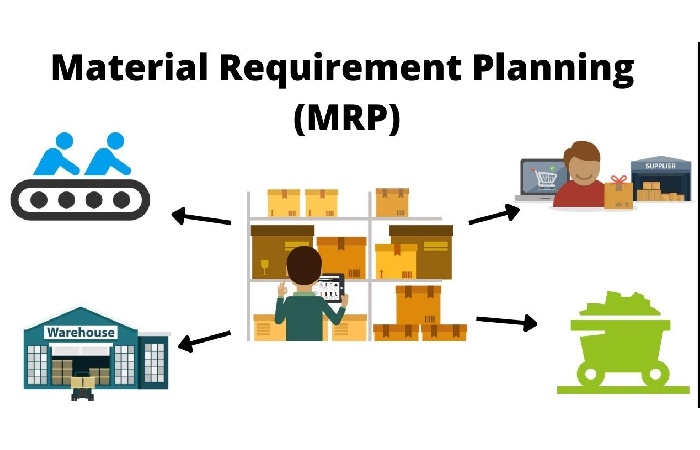It’s a fact of life that companies will spend more money on products than they need to – this is known as over-buying. Material requirement planning (MRP) is an inventory management method that allows companies to be more efficient when planning product purchases and ordering raw materials to avoid over-buying and to encourage cost-cutting.
MRP is a supply chain management method that determines what raw materials are needed to make products (and when they’re needed), how many of these materials are needed, and where they will be coming from.
It’s also helpful in determining which products need to be shipped out and when. The goal of MRP is to reduce the amount of money a company spends on inventory by reducing the amount of over-ordered and unused products. This is often referred to as under-buying and can be just as damaging to a business as over-buying.
You need to be aware of the fact that material requirement planning (MRP) is an important part of any business organization that produces products and services. For example, if you are in the business of manufacturing products, then you have to have a good MRP system in place to control the production, inventory and sales of your products.
What is Material requirement planning?

Companies with long lead times and many parts commonly use Material Requirement Planning (MRP) as a vital tool to manage the flow of materials from the time they place orders until they deliver them to the purchaser in the manufacturing industry.
Material Requirement Planning (MRP) is a computer-based system comprising planning, scheduling and inventory management modules. In a nutshell, it helps in the coordination of production, inventory and distribution activities. MRP is the planning and execution of material requirements. Moreover, it is a type of production planning which is used to manage the flow of raw materials and components.
Benefits of MRP
MRP is a part of the broader supply chain management. The objective of MRP is to establish a firm’s inventory levels based on the production requirements. Therefore, it is imperative to incorporate MRP into your business to ensure that you have the right materials at hand. The result is a reduced waiting time and increased customer satisfaction.
Material requirements planning (MRP) is a planning process that helps to maximize the efficiency of the manufacturing and supply chain system.
It is a crucial process for organizations to optimize their limited resources in the production and supply chain processes. MRP is a complex process, which includes many data entry and manipulation activities. Therefore, the firms need to implement the Material requirements planning (MRP) efficiently.
Material requirement planning is a management support system used to determine a manufacturing facility’s material needs. It helps production managers fulfill customers’ demands by using a forecast of the future.
Material planning helps efficiently use materials to manufacture goods and services. It also helps efficiently use resources such as raw materials, labor, and equipment.
To succeed in Material Requirement Planning (MRP), follow these tips:
Accurate Data Input: Ensure up-to-date and accurate data on inventory levels, lead times, and demand forecasts.
Clear Communication: Foster clear communication between departments to align production schedules with demand forecasts.
Utilize Software: Invest in MRP software to streamline planning, scheduling, and inventory management processes.
Optimize Parameters: Regularly review and adjust reorder points, safety stock levels, and order quantities to optimize inventory and minimize shortages.
Monitor Performance: Continuously track MRP metrics like on-time delivery, inventory turnover, and lead time for improvement.
Flexibility: Maintain production schedule flexibility to adapt to demand changes or supply chain disruptions.
Training: Provide MRP training to ensure staff effectively utilize system features.
Collaborate: Foster supplier relationships to enhance lead times, quality, and material delivery reliability.
Conclusion
By implementing these tricks and tips, businesses can enhance the effectiveness of their Material Requirement Planning processes and optimize their overall operations.





